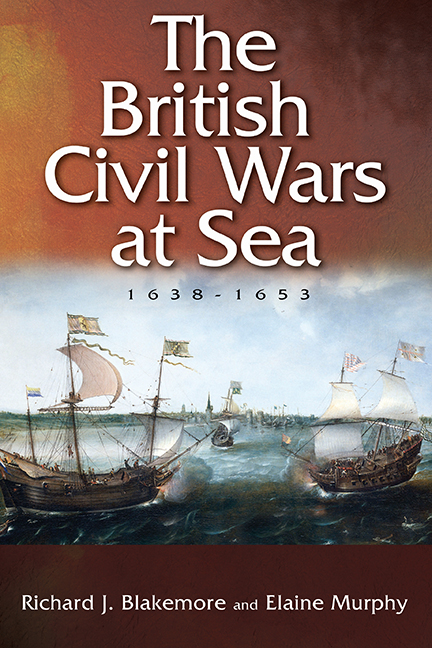Book contents
- Frontmatter
- Dedication
- Contents
- List of Illustrations
- Preface and Acknowledgements
- List of Abbreviations
- Map
- Introduction
- 1 Warfare at Sea in the Early Modern Period
- 2 The Outbreak of War, 1638–1642
- 3 The War at Sea, 1642–1646
- 4 Parliament's Navy, 1642–1646
- 5 Royalist, Confederate, and Scottish Naval Efforts, 1642–1653
- 6 Revolution, 1647–1649
- 7 Conquest, 1649–1653
- Conclusion
- Appendix 1 Timeline of the Civil Wars at Sea, 1638–1653
- Appendix 2 Parliamentarian Fleets, 1642–1649
- Bibliography
- General Index
- Index of Ships
Introduction
Published online by Cambridge University Press: 19 July 2019
- Frontmatter
- Dedication
- Contents
- List of Illustrations
- Preface and Acknowledgements
- List of Abbreviations
- Map
- Introduction
- 1 Warfare at Sea in the Early Modern Period
- 2 The Outbreak of War, 1638–1642
- 3 The War at Sea, 1642–1646
- 4 Parliament's Navy, 1642–1646
- 5 Royalist, Confederate, and Scottish Naval Efforts, 1642–1653
- 6 Revolution, 1647–1649
- 7 Conquest, 1649–1653
- Conclusion
- Appendix 1 Timeline of the Civil Wars at Sea, 1638–1653
- Appendix 2 Parliamentarian Fleets, 1642–1649
- Bibliography
- General Index
- Index of Ships
Summary
On 11 October 1639 the royal navy was humiliated. In the Downs, Britain's most important anchorage, a large Dutch fleet attacked and scattered a Spanish force, in so doing defying British neutrality and claims to maritime sovereignty, while a small English squadron was powerless to intervene. This marked the end of a month's anxious watching for the English commander, Sir John Pennington, and his fellows. This Spanish fleet had been sighted near Plymouth at the start of September, carrying 12,000 soldiers for their army in Flanders (some 2,000 of them aboard English merchant ships hired by the Spanish). They soon met the Dutch in the channel, under Admiral Maarten Tromp, and in a running fight sailed eastwards until 9 September, when they sought the security of the Downs.
The Dutch ships followed them, and Pennington's squadron found themselves in the middle of a tense situation. On the night of 11 September fifteen Spanish ships escaped northwards, which provoked protests from the Dutch, as Pennington had previously forbidden them to position their ships against just such an eventuality. About a fortnight later a Dutch ‘Frigat’ sailed into Margate harbour, flying English colours, and there seized upon two small vessels carrying Spanish soldiers: complaints to Tromp were met on his part by claims of innocence and ignorance. Indeed, the Dutch admiral repeatedly insisted that he would inform Pennington before he moved against the Spanish and would do nothing to offend the British crown. However, following the direct orders he had received from the Dutch government, he eventually attacked in the midst of a heavy fog, later maintaining that the Spanish had opened fire first.
Throughout these weeks Charles I's naval administration were unprepared and indecisive, perhaps because they had just supported a wholly unsuccessful military campaign in Scotland. Pennington's repeated requests for clear instructions about how to proceed elicited only prevarication. Algernon Percy, tenth earl of Northumberland, the lord high admiral, wrote to Pennington on 10 September that he was ‘confident the Hollanders will bee so respective to the King Our Master as not to offer any violence to the Spaniards whilest they are under his Majesties protection’, and again two days later that the king was ‘well satisfied … with the Hollanders civility at this time, and doubts not, but that they will continue their faire respects to his Majestie’.
- Type
- Chapter
- Information
- The British Civil Wars at Sea, 1638–1653 , pp. 1 - 11Publisher: Boydell & BrewerPrint publication year: 2018

